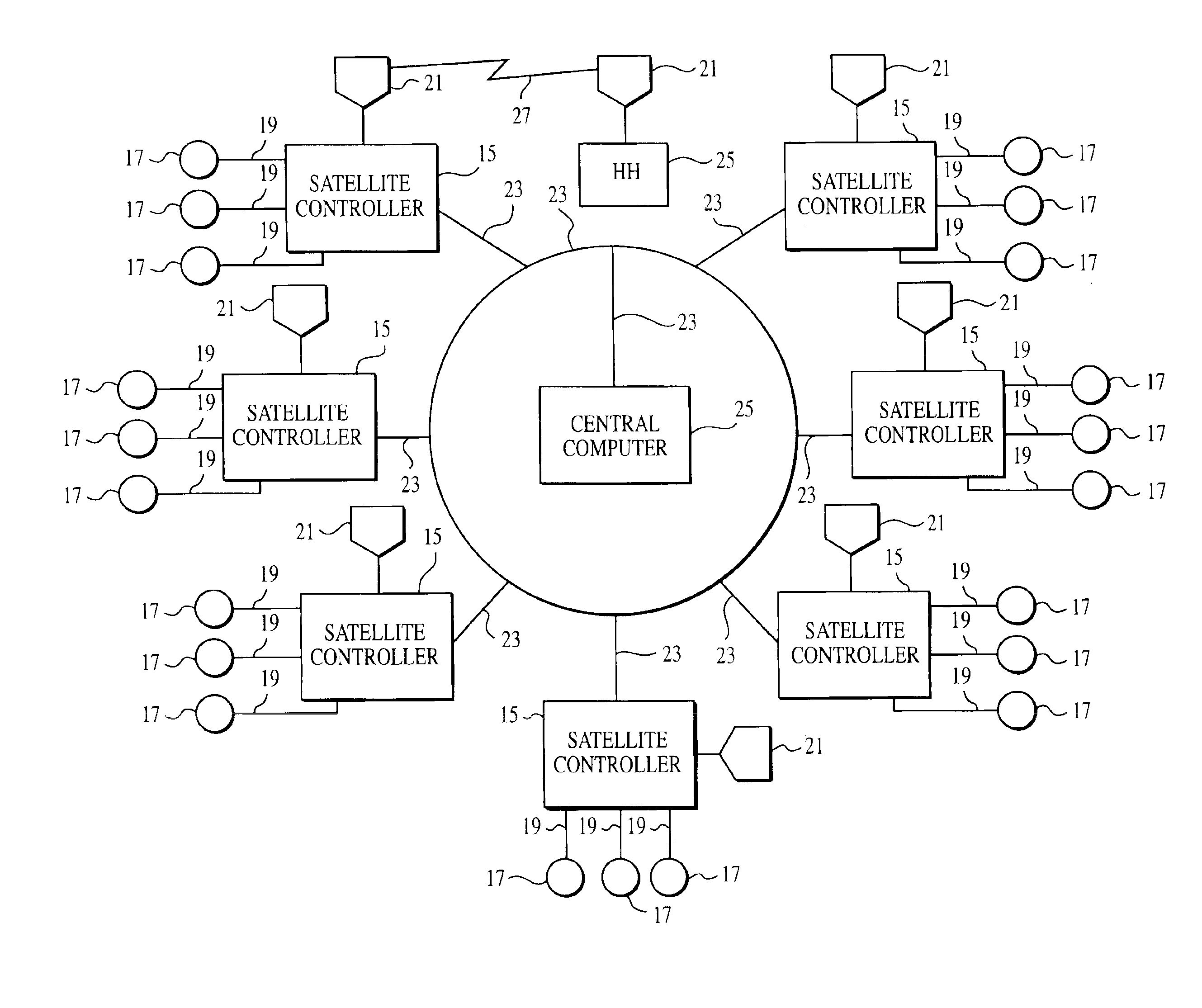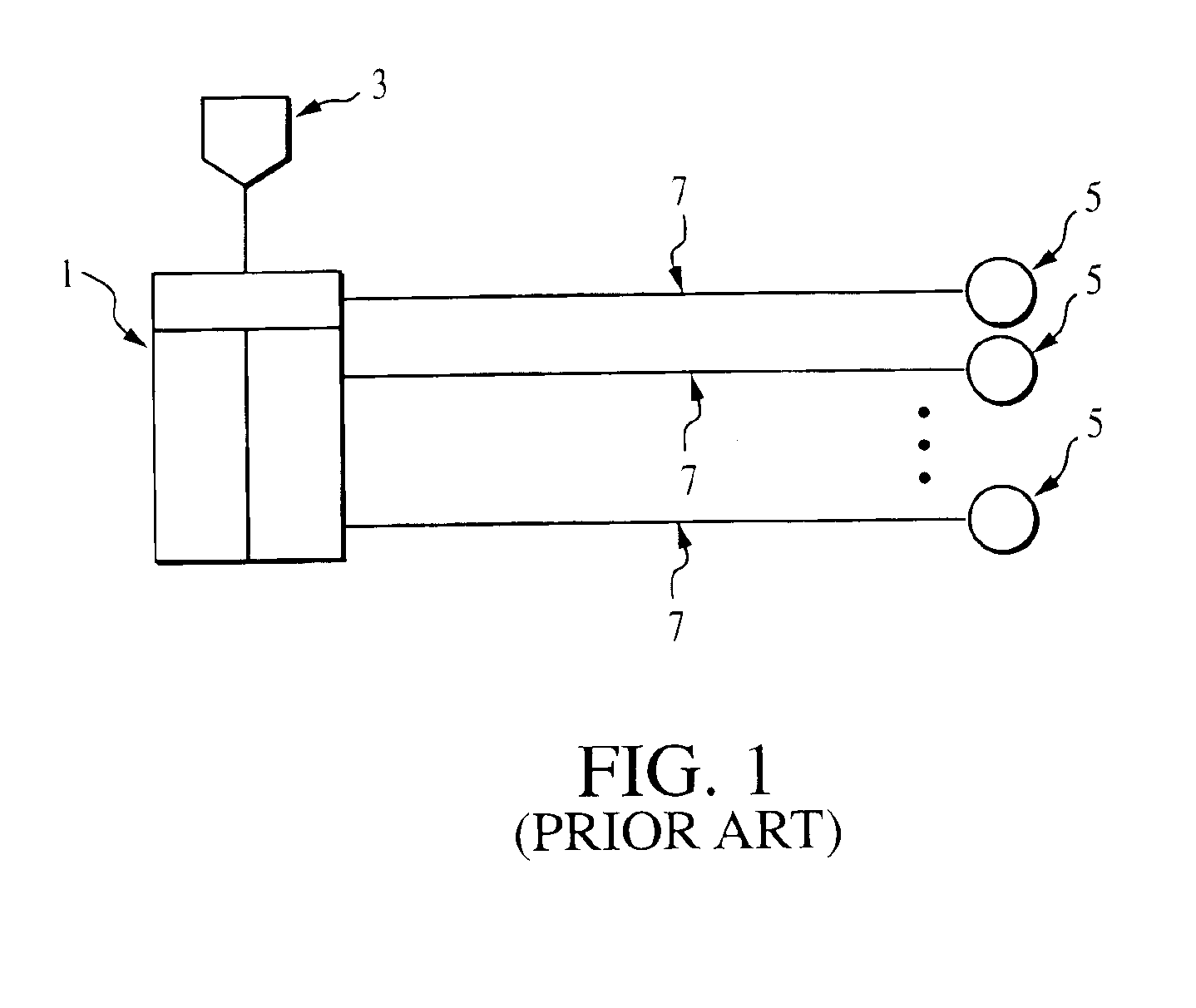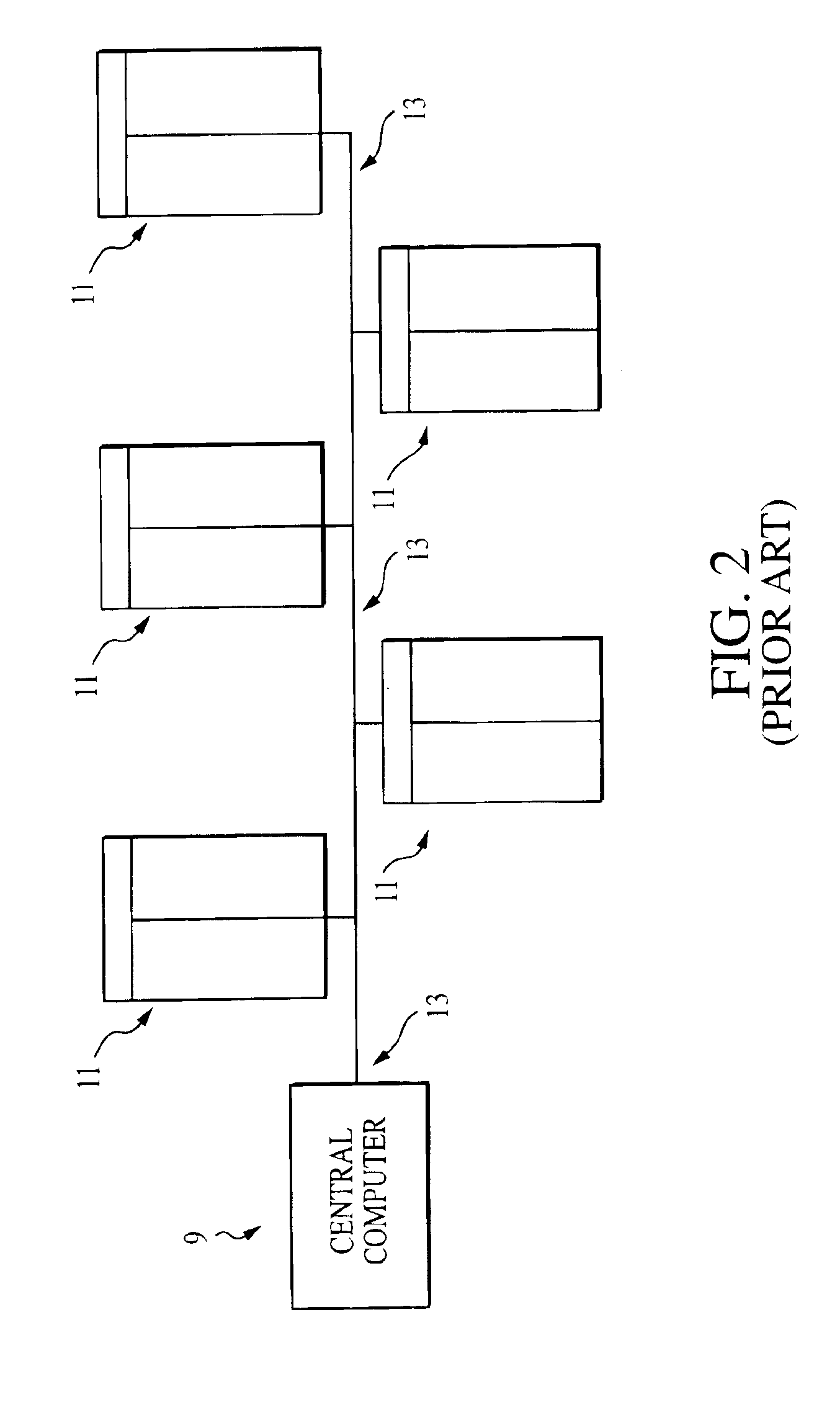Distributed control network for irrigation management
a technology of distributed control network and irrigation management, which is applied in the direction of electric controllers, program control, instruments, etc., can solve the problems of large installation size, large manpower and effort required by central satellite system, and difficult maintenance of sites that utilize multiple stand-alone controllers
- Summary
- Abstract
- Description
- Claims
- Application Information
AI Technical Summary
Benefits of technology
Problems solved by technology
Method used
Image
Examples
Embodiment Construction
[0029]Reference is made to FIG. 3, which depicts the block diagram of the distributed control network for irrigation management. The control network is a peer-to-peer network wherein the entire system, or any portion thereof, can be monitored and operated from any node in the network. Several satellite controllers 15 are connected to one another, and further connected to a central computer 25, all via a communication bus 23. FIG. 3 is not meant to limit the number of satellite controllers 15 that can be connected to the communication bus 23. The satellite controllers 15 operate as nodes in the peer-to-peer network wherein the entire control system can be monitored and operated.
[0030]In the system depicted in FIG. 3, the satellite controllers 15 perform a variety of functions. The satellite controllers 15 control the solenoid operated valves 17 and interface with various sensors 21. Any standard solenoid is acceptable. Preferably, the satellite controller can operate up to 96 valves....
PUM
 Login to View More
Login to View More Abstract
Description
Claims
Application Information
 Login to View More
Login to View More - R&D
- Intellectual Property
- Life Sciences
- Materials
- Tech Scout
- Unparalleled Data Quality
- Higher Quality Content
- 60% Fewer Hallucinations
Browse by: Latest US Patents, China's latest patents, Technical Efficacy Thesaurus, Application Domain, Technology Topic, Popular Technical Reports.
© 2025 PatSnap. All rights reserved.Legal|Privacy policy|Modern Slavery Act Transparency Statement|Sitemap|About US| Contact US: help@patsnap.com



